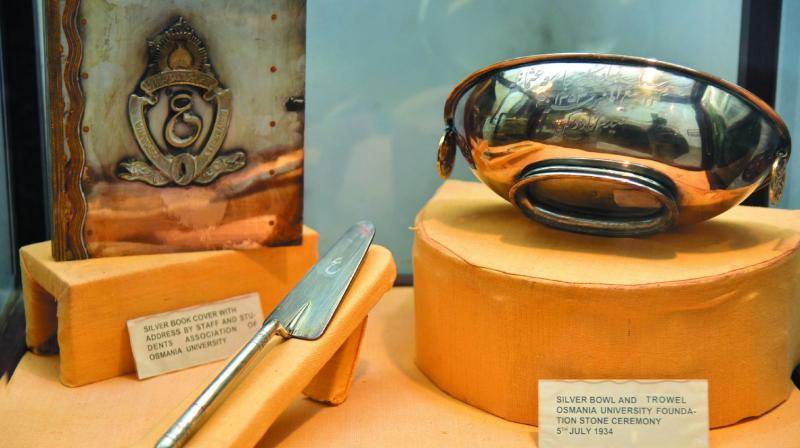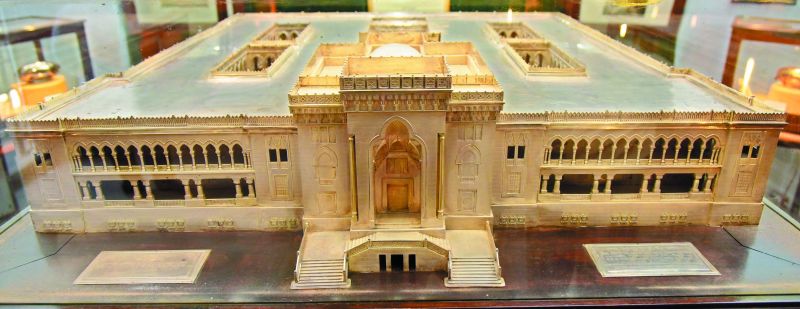Osmania University was called the Swadeshi University of India
Osmania University, India's seventh oldest, was established to mark Nizam's ascension to the throne.

Hyderabad: Nawab Mir Osman Ali Khan Bahadur, Nizam VII, the founder of Osmania University, which is celebrating its centenary on April 26 this year, used a gold trowel and bowl for laying the foundation stone for the Arts College building on July 5, 1934. Organisers kept an identical silver bowl and trowel on display.
 A silver replica of the Arts College, weighing about 120 kg.
A silver replica of the Arts College, weighing about 120 kg.
A silver replica of the Arts College building weighing 120 kg, manufactured by Richard and Co of Secunderabad and presented to the Nizam by the Public Works Department during the opening ceremony on December 4, 1939, and a silver book cover with an address by the staff and students’ association of OU are other interesting artifacts made for the opening are preserved in the university museum.
“The silver bowl and trowel used by Nizam VII for the foundation stone laying ceremony of Osmania University on July 5, 1934, the silver book cover, silver replica of the Arts College besides photos are part of the rare collection from the Nizam’s era in the museum. We will display the treasures during OU’s centenary celebrations,” Dr D. Bhaskara Rao, chief curator of the Nizam’s Museum housed in Purani Haveli, told this newspaper.
Purani Haveli in the Old City was acquired by the second Nizam in 1750 when he made Hyderabad the capital of the state. Serving as a museum for the university now, it contains rare old photographs showing the Nizam at the foundation stone laying function, the royal salute accorded to him, the south and north views of the Arts College as the work on it progressed, and a panoramic view of the college building.
It also has on display 400-odd souvenirs, gifts, mementos and models presented to the seventh Nizam on the occasion of the silver jubilee of his rule in 1937 and later.
The majestic Arts College, the main building of the university, built in the architectural style of the later Osman Shahi period combined with the dominant characteristics of the Hindu style, was completed in 1939 at a cost of Rs 36 lakh.
The Nizam raised it through a firman issued in 1917. It came into existence in 1918 and is the seventh oldest university in the country and third oldest in South India.
Under the sixth and seventh Nizams, public education of a high standard was a priority.
The seventh Nizam’s firman announced: “The fundamental principal in the working of the university should be that Urdu should form the medium of higher education, but that knowledge of English as a language should at the same time be deemed compulsory for all students...With this object in view, I am pleased to order the inauguration of a university to be called the Osmania University of Hyderabad in commemoration of my occasion ascension to the throne.”
In the museum can be found the comments of Nobel laureate Rabindranath Tagore on the revolutionary experiment of using a regional language (Urdu) as a medium of higher education.
Tagore wrote: “I have long been waiting for the day when, freed from the shackles of a foreign language, our education becomes naturally accessible to all our people. “It is a problem for the solution of which we look to our Native States, and it gives me great joy to know that your State proposes to found a University in which instructions are to be given through the medium of Urdu. It is needless to say that your scheme has my fullest appreciation.”
C Rajagopalachari, the last Governor-General of India, termed the university a “true Vidyapeeth, the Swadeshi University of India.”

